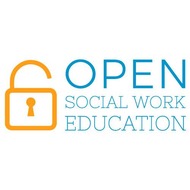Factors Leading to Premature Terminations of Kinship Care Placements
(View Complete Item Description)This curriculum focuses on factors that may lead to differential placement outcomes for children who have become dependents of the court, as the result of abuse and neglect, and have been placed with kin rather than in traditional foster homes. It is intended for use by child welfare faculty in California’s schools of social work or social welfare in both BSW and MSW programs and may be used in direct practice or Human Behavior and the Social Environment (HBSE) classes. In addition, the curriculum, or parts from it, may be used in workshops provided to line workers, supervisors, and/or managers by any of the public child welfare training academies in California or public child welfare agencies. The intent of this curriculum is to provide students and child welfare professionals with (a) background information on kinship care as an alternative to traditional foster care, (b) a brief review of the literature pertaining to the characteristics of dependent children in kinship care and their care providers, (c) opportunities to discuss beliefs about why kinship care is valuable (or not) and why it may or may not be successful, (d) demographic data pertaining to selected characteristics of children in kinship care and their care providers derived from a sample of California child welfare cases, (e) factors which may or may not be related to premature termination of kinship care placements, (f) caregiver perceptions of differential placement outcomes, (g) social worker perceptions of differential placement outcomes, and (h) opportunities to discuss how students and/or child welfare workers can decrease premature termination of kinship care placements. The curriculum is accompanied by a PowerPoint presentation containing key points from each module followed by one or more slides presenting an “active learning experience.” (78 pages) Chang, J., Liles, R., & Hoang, T. (2006).
Material Type: Module




















